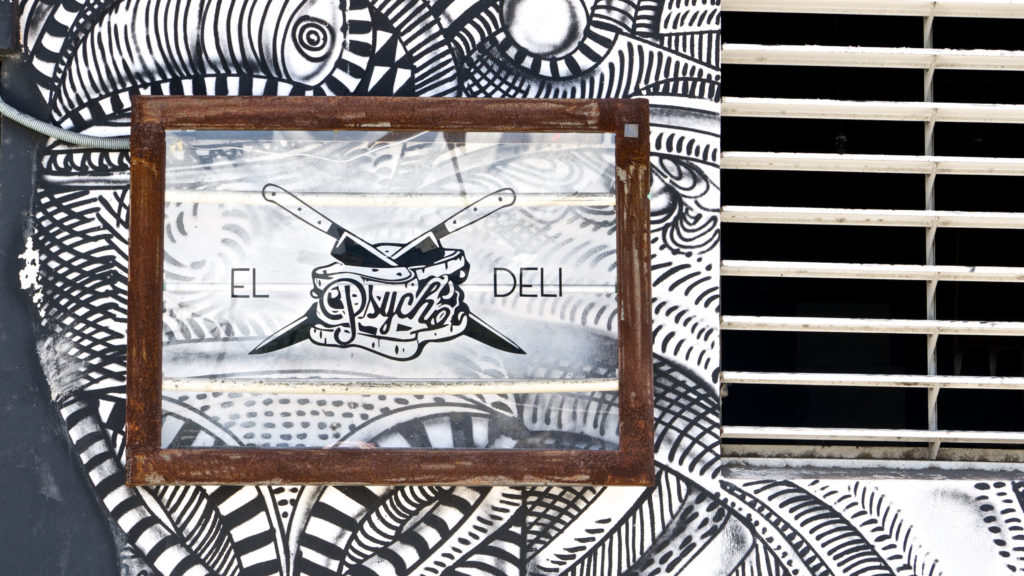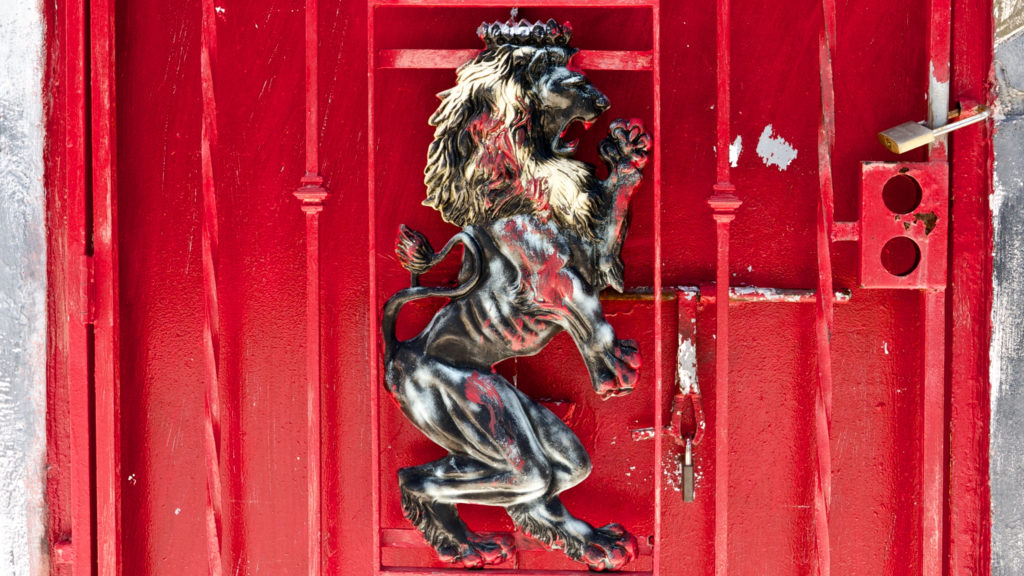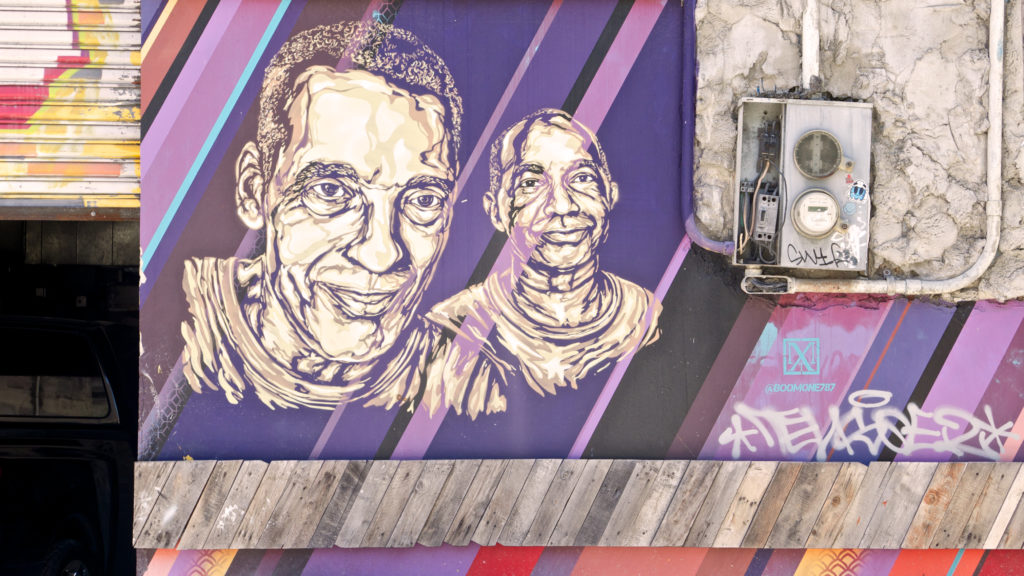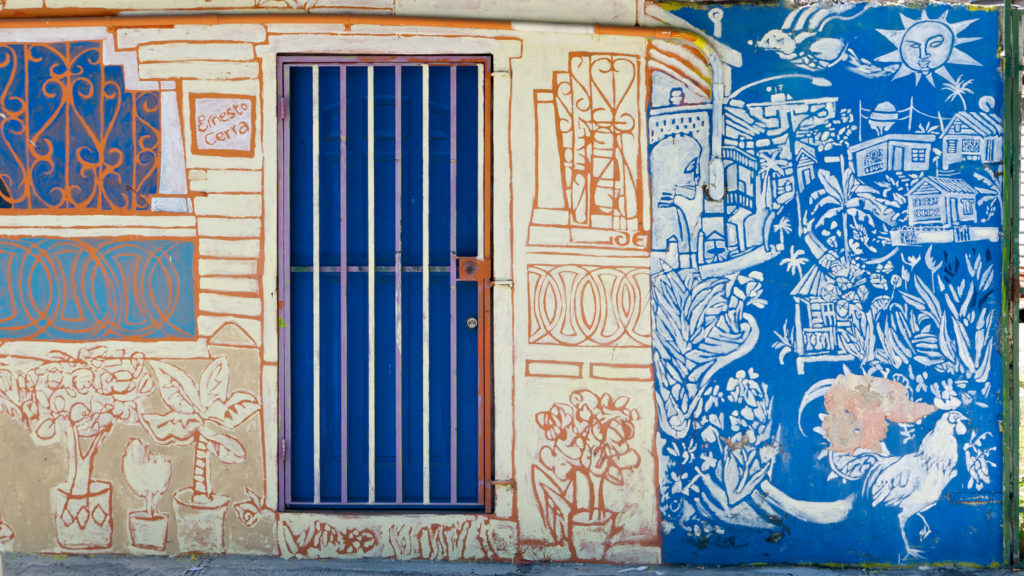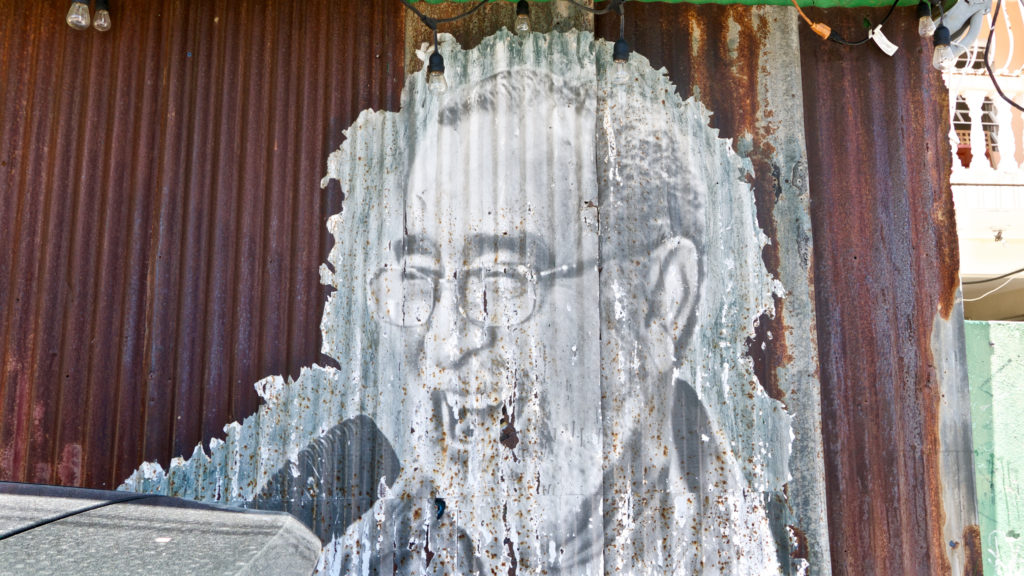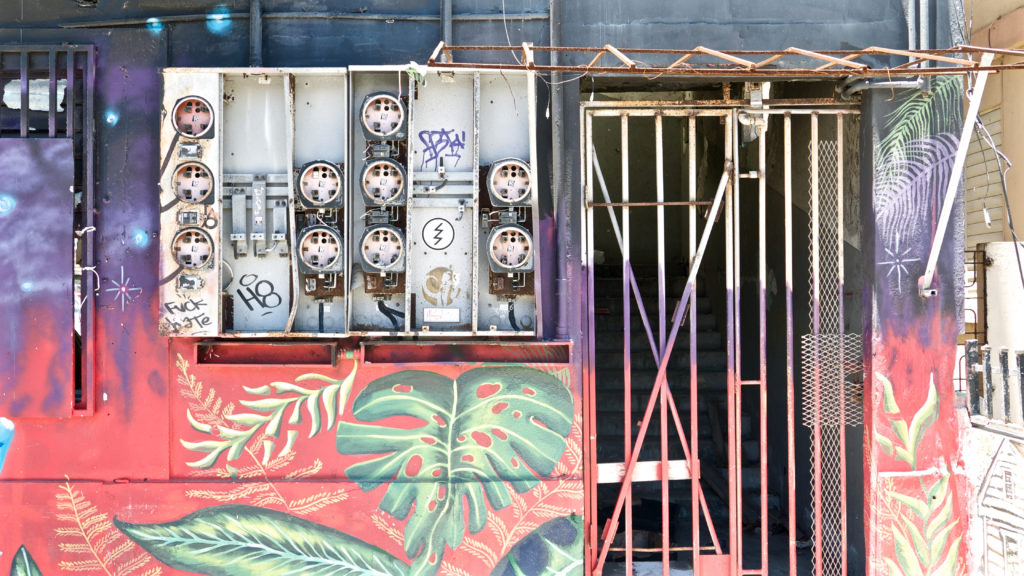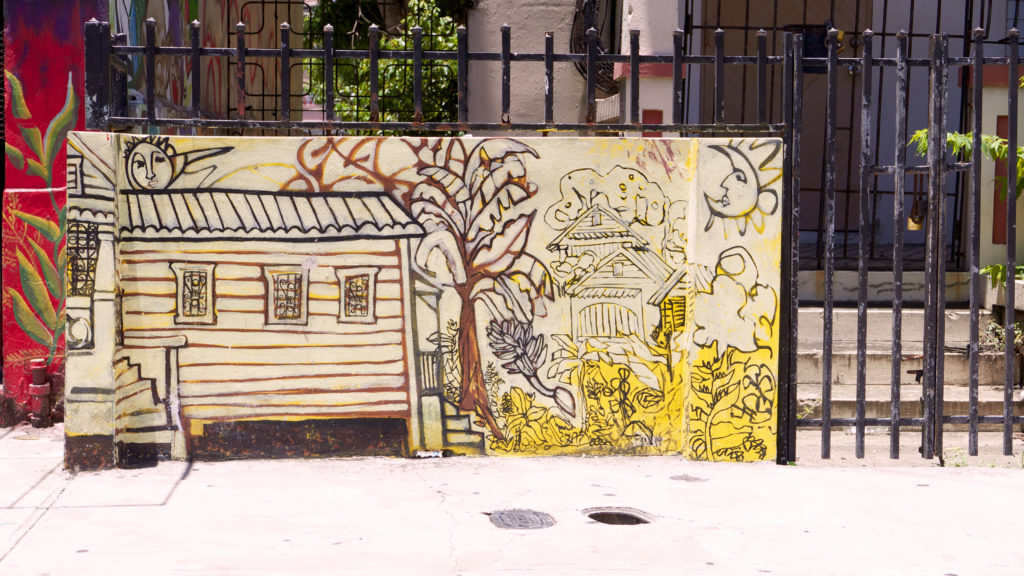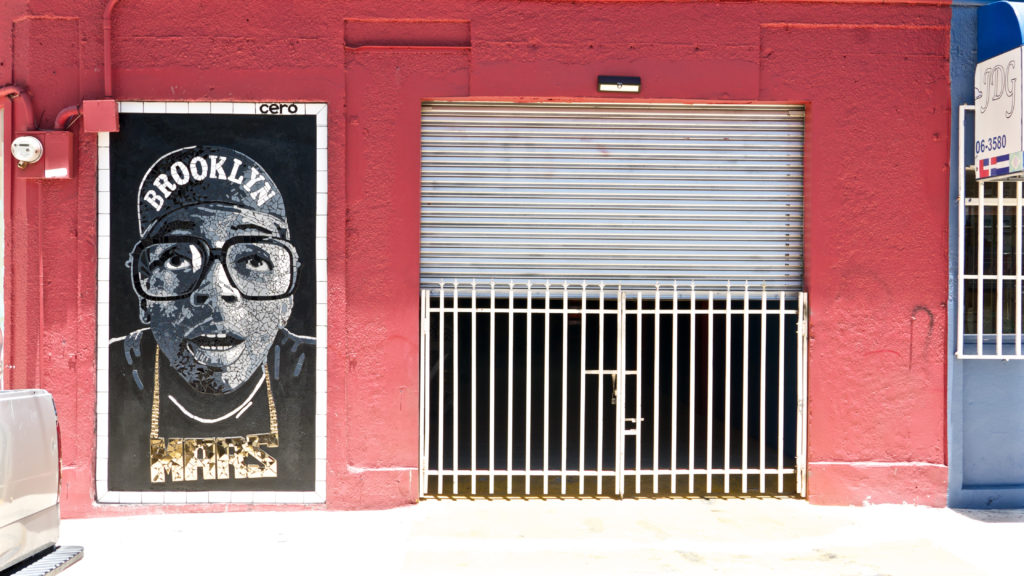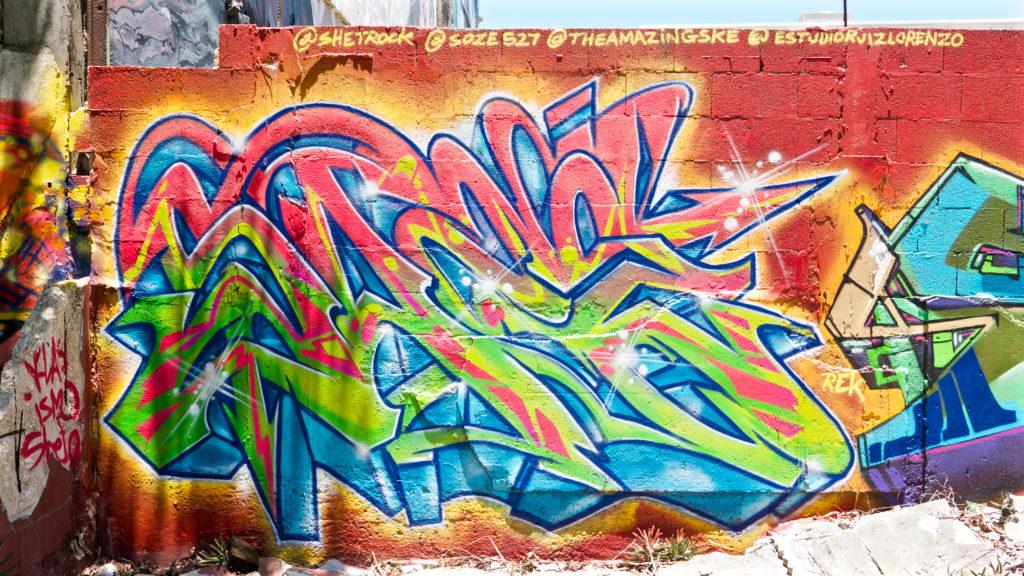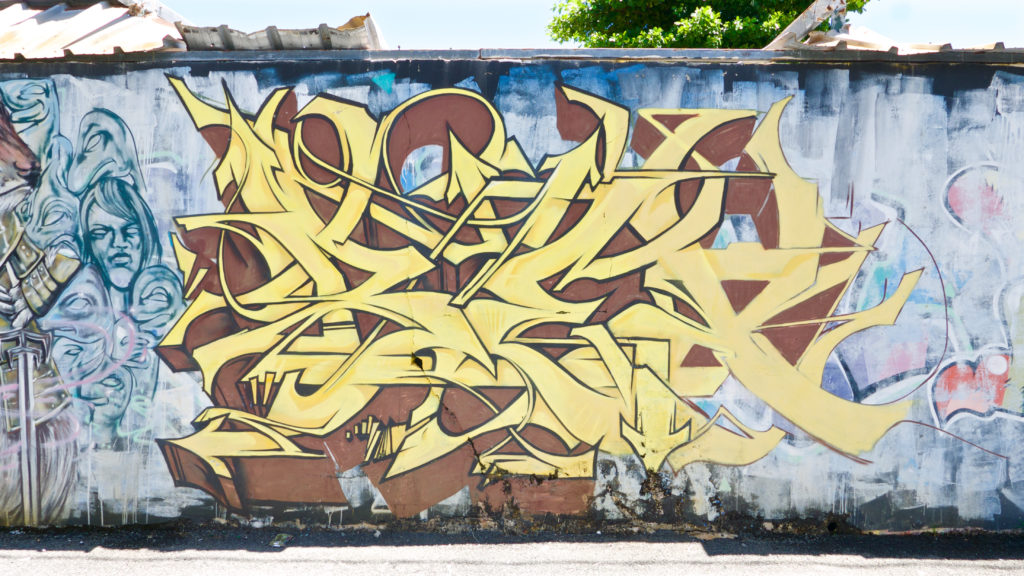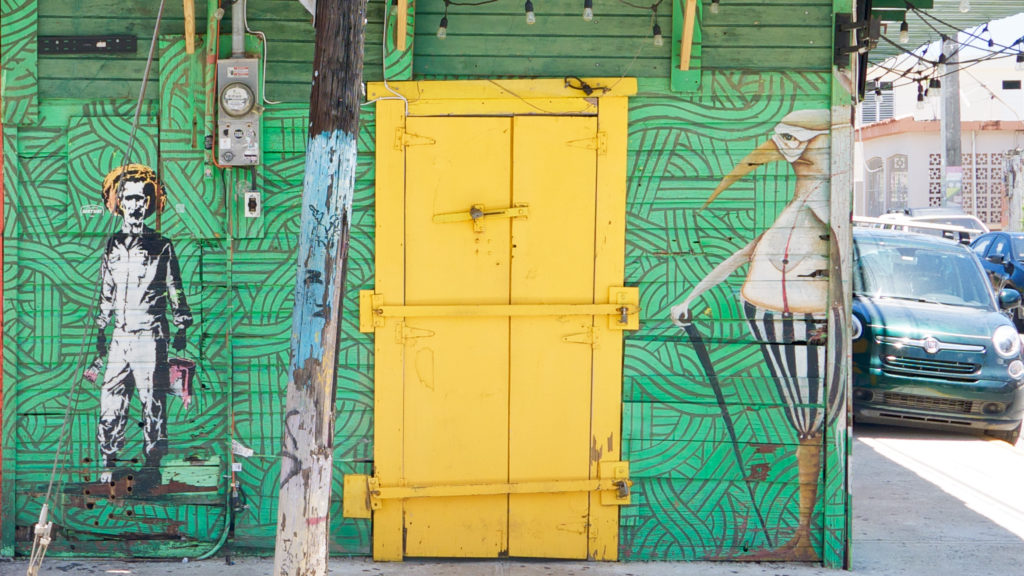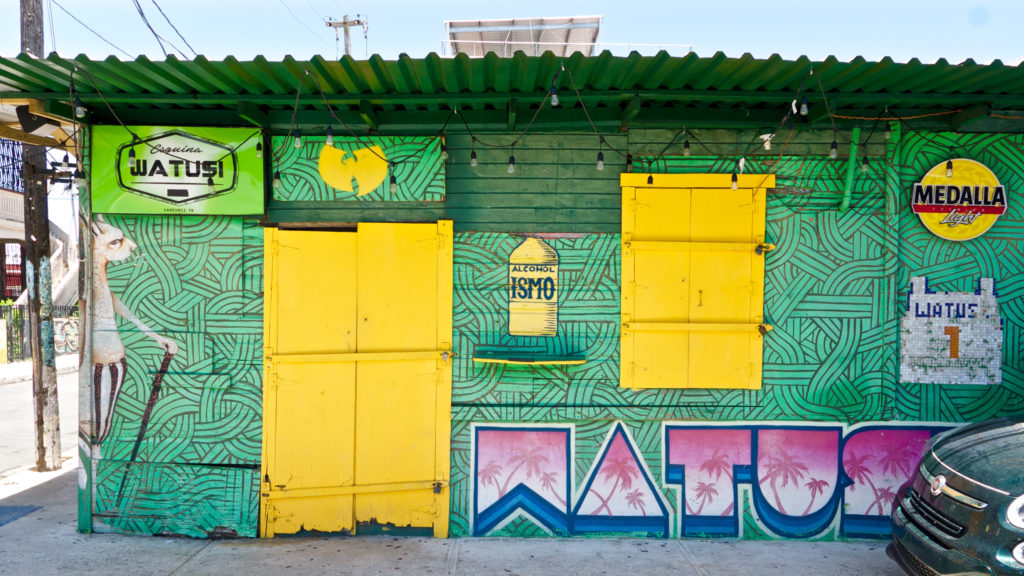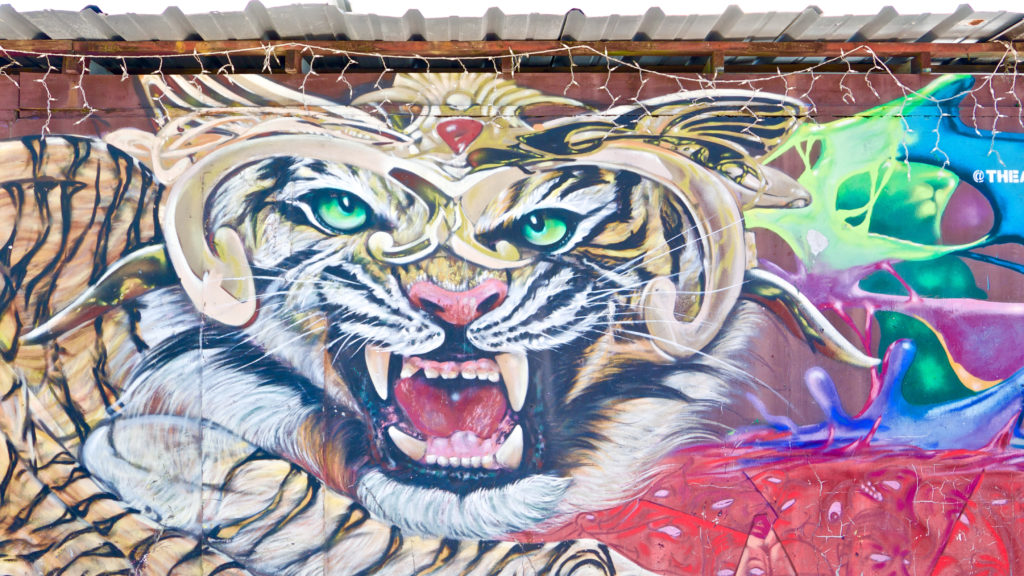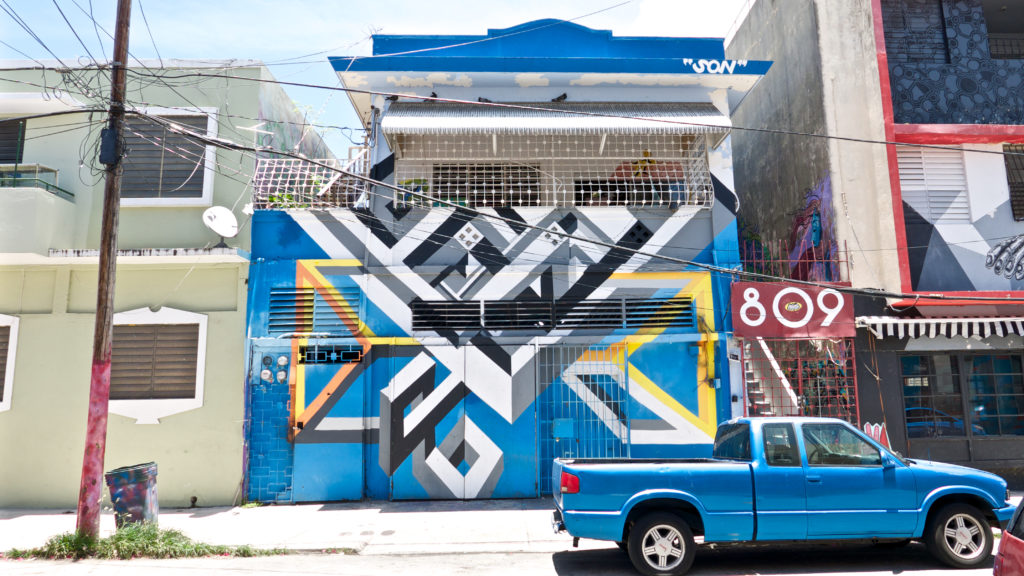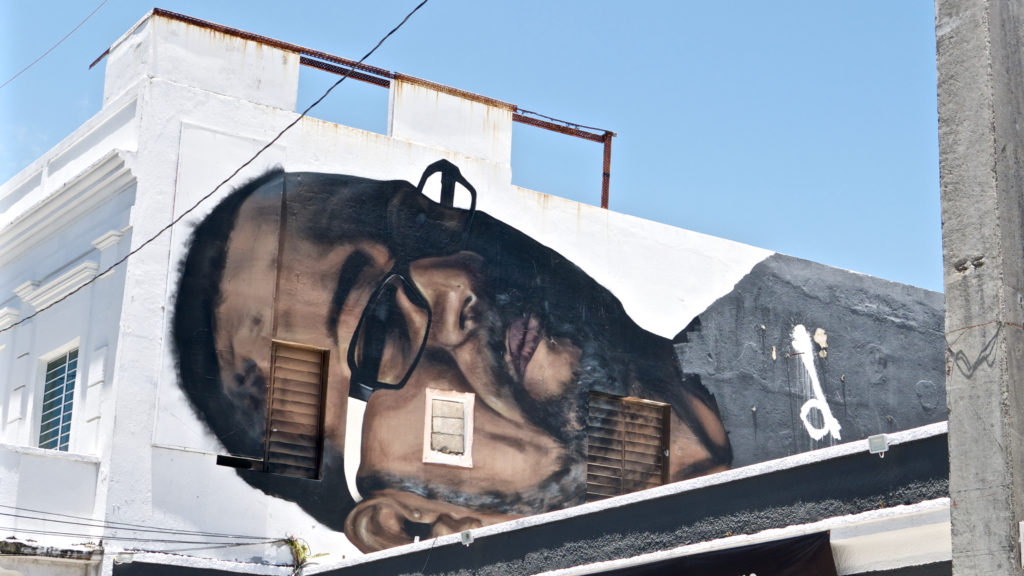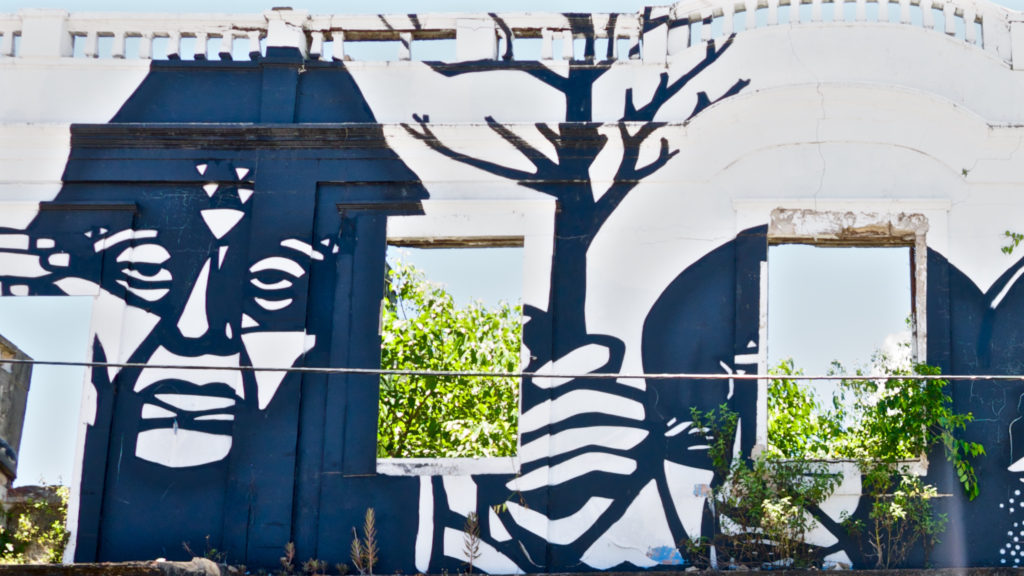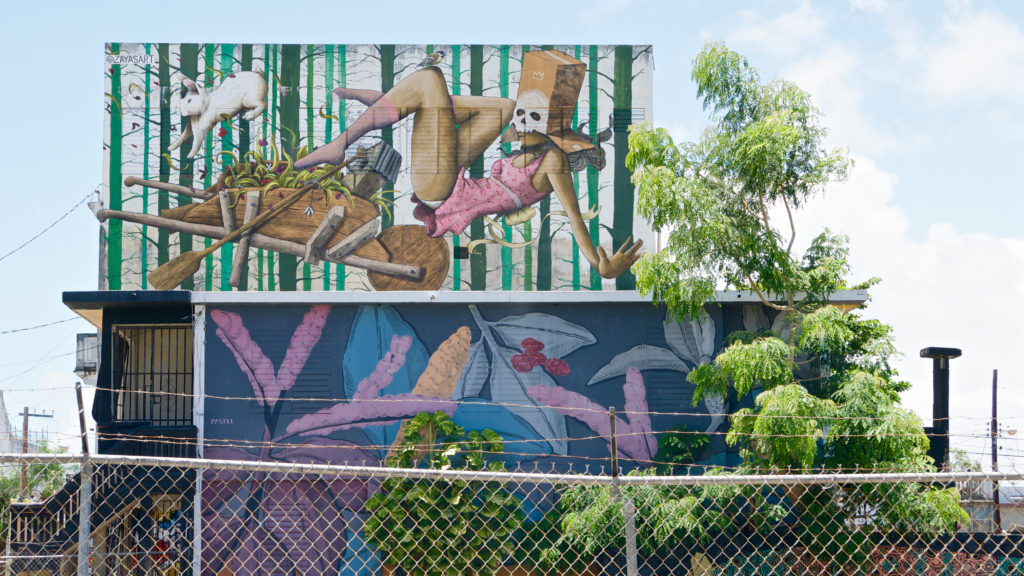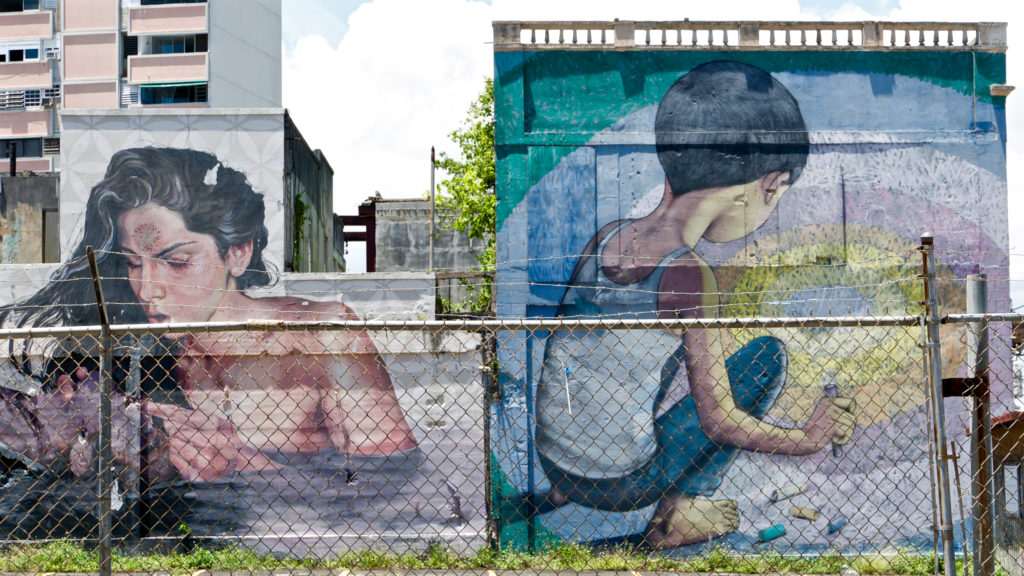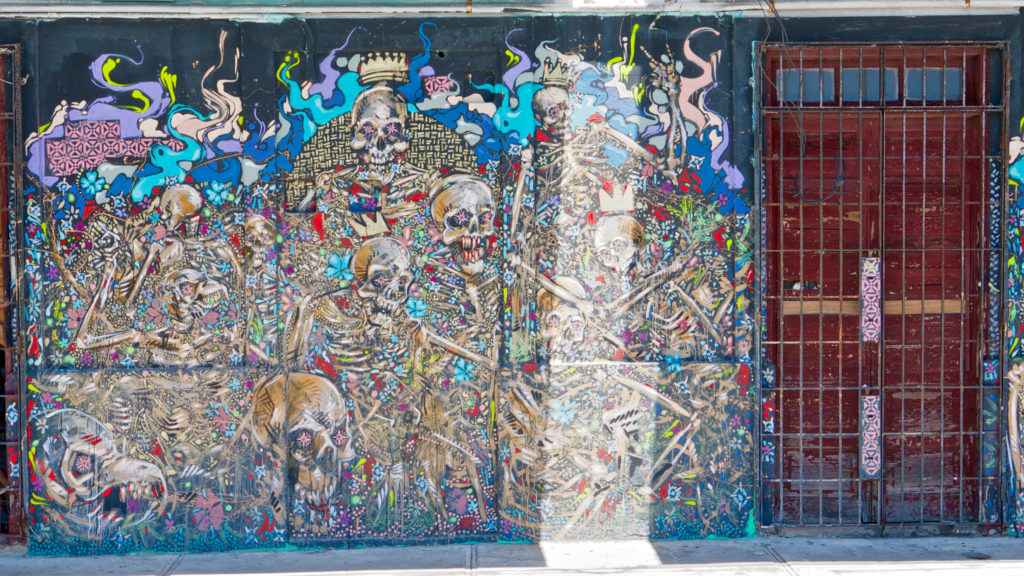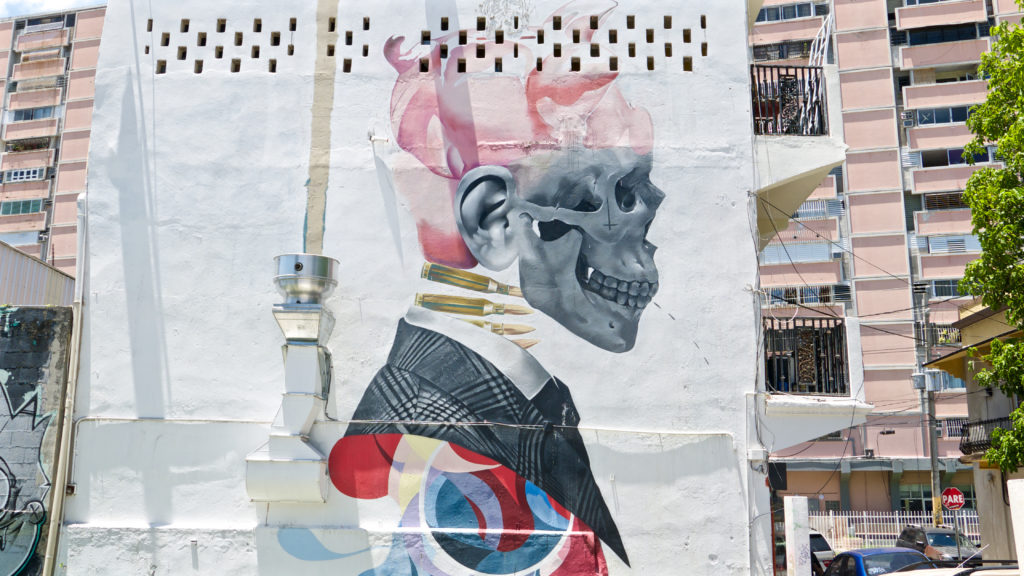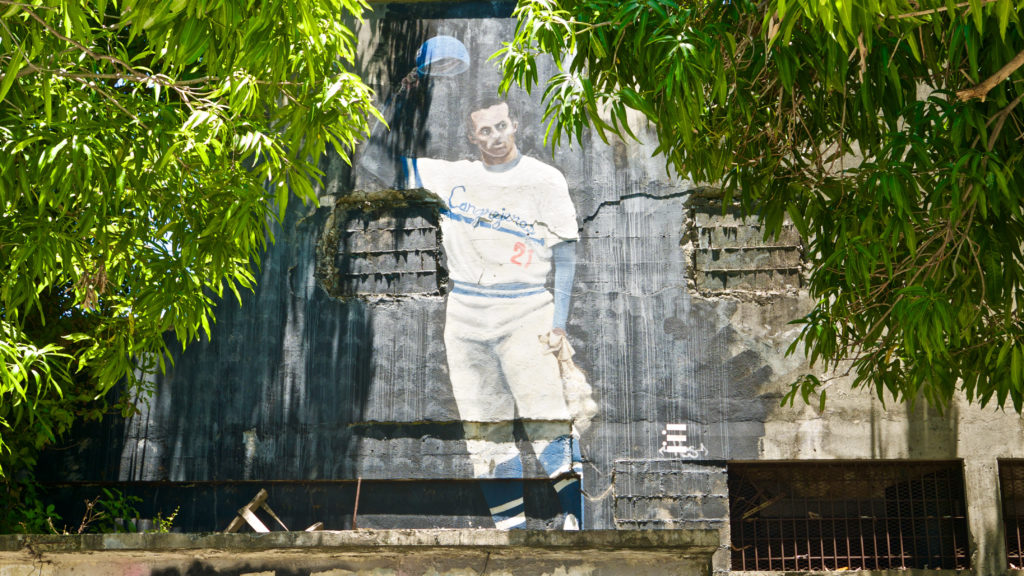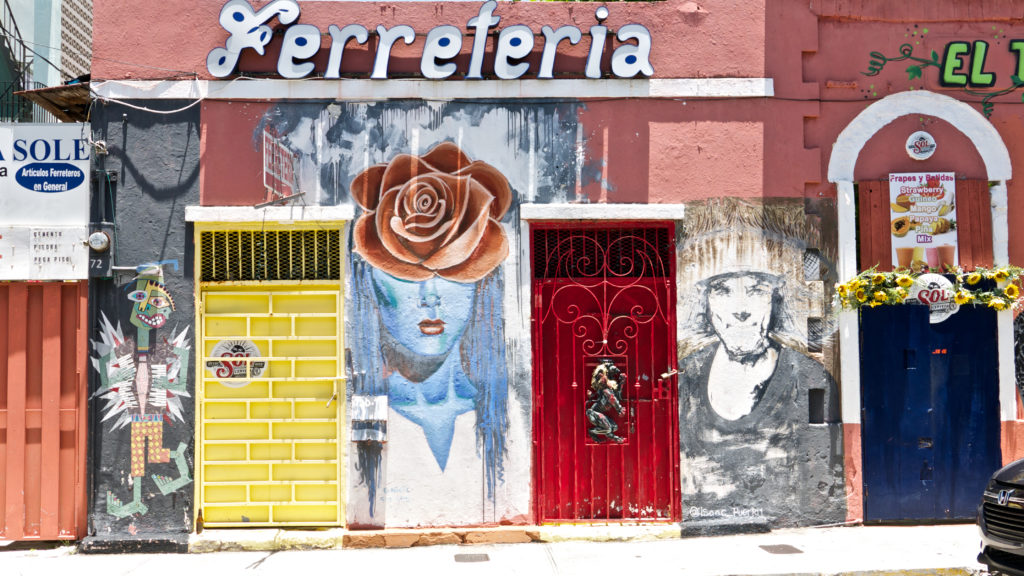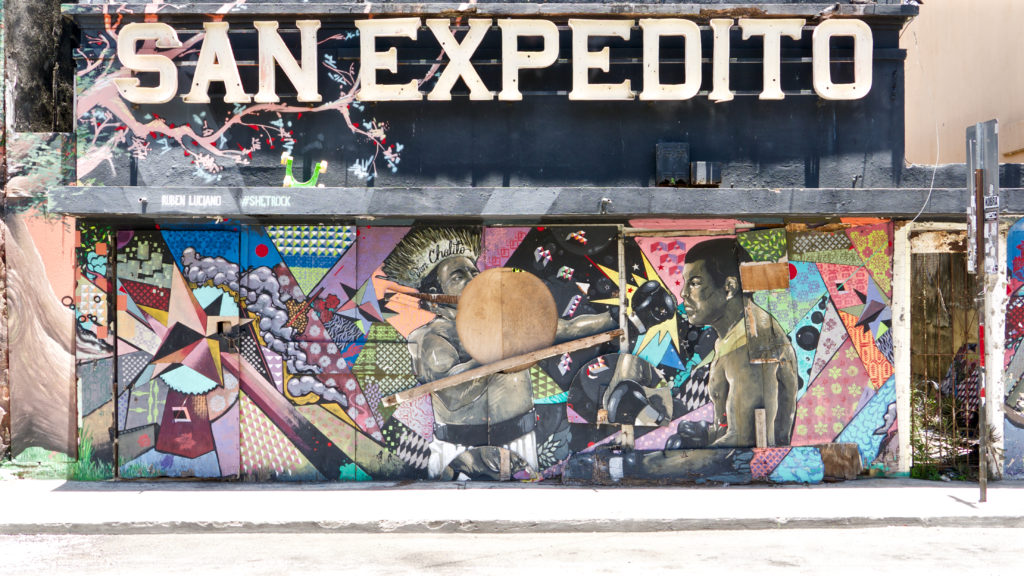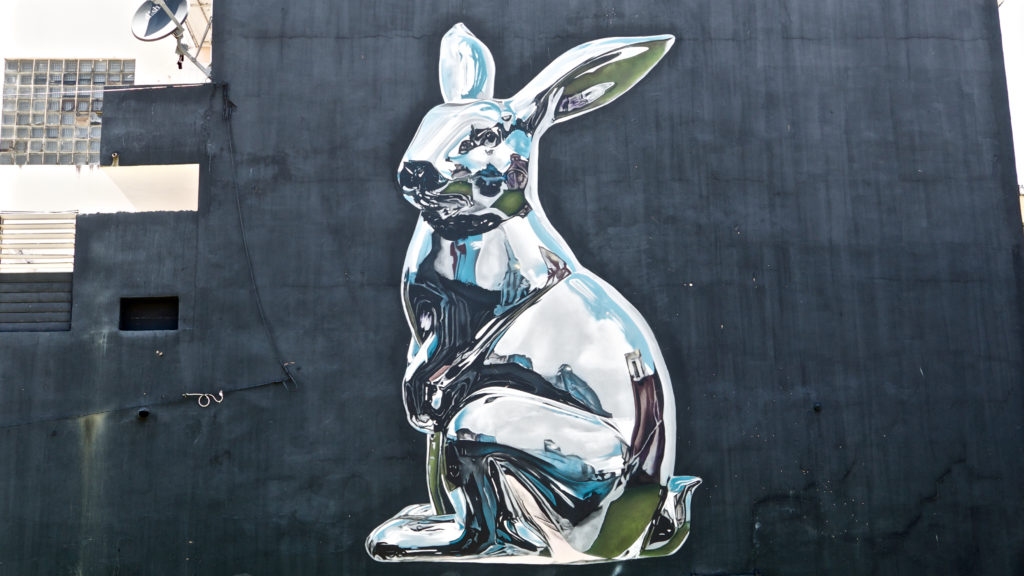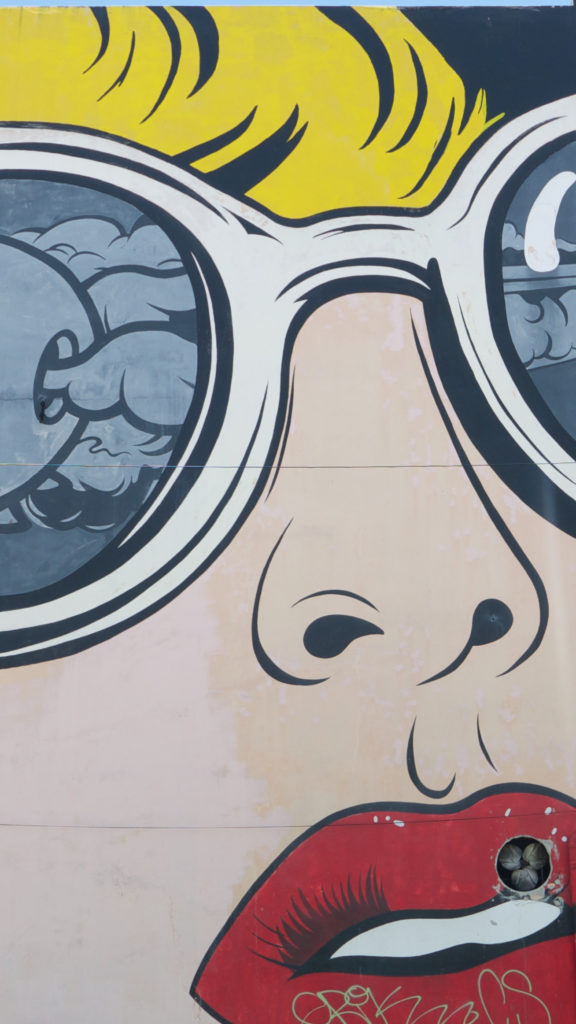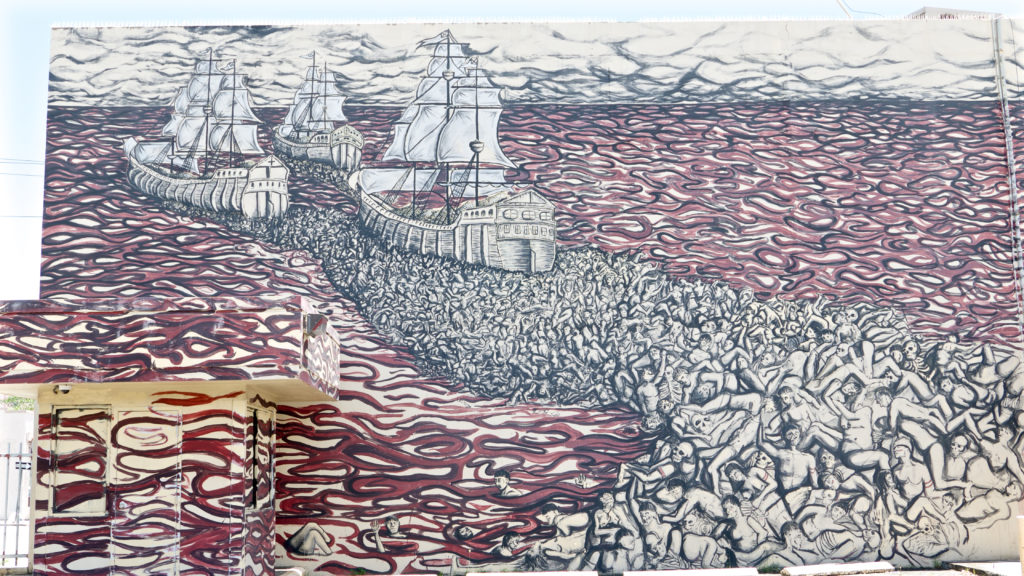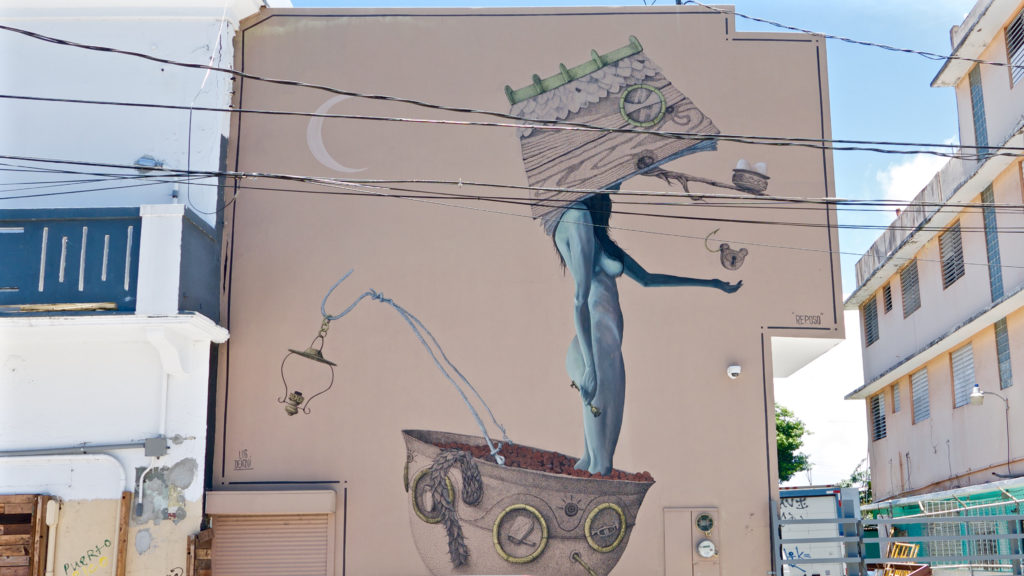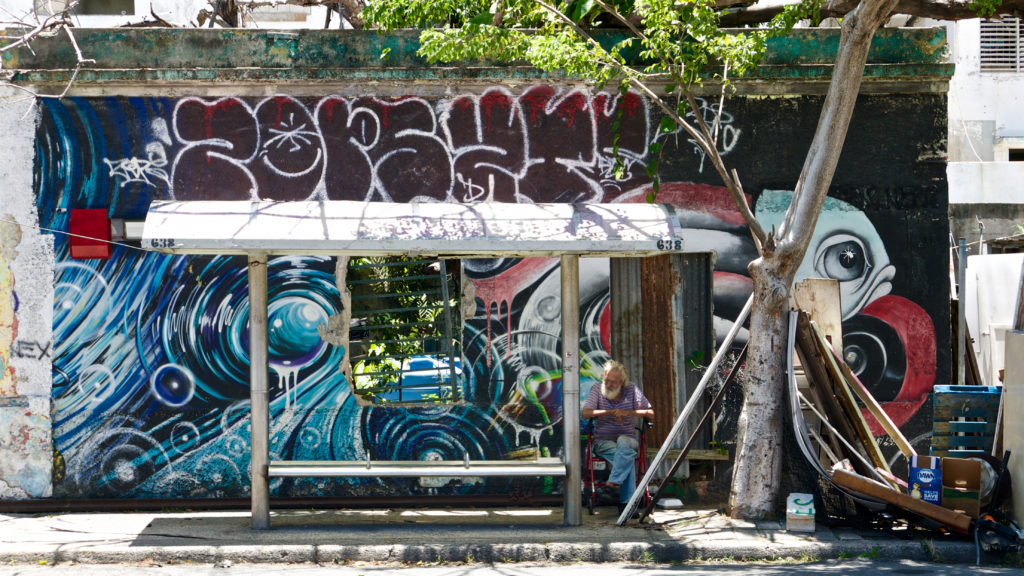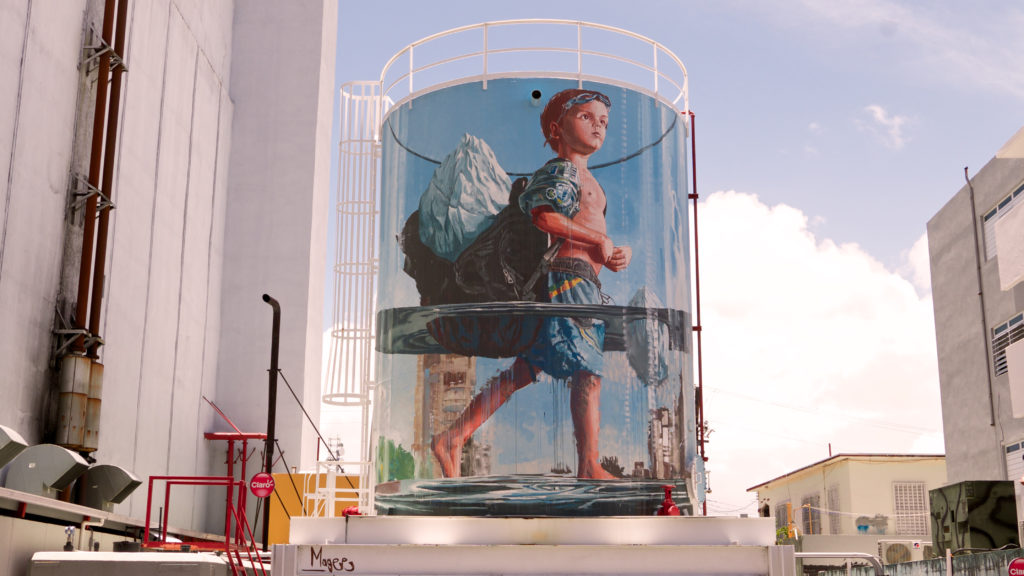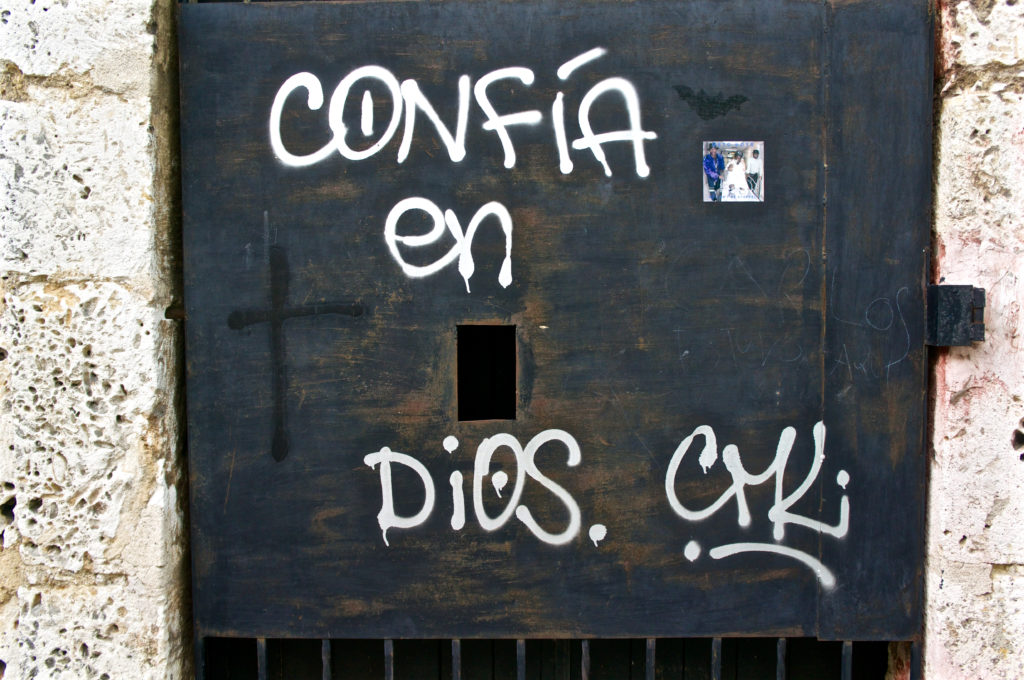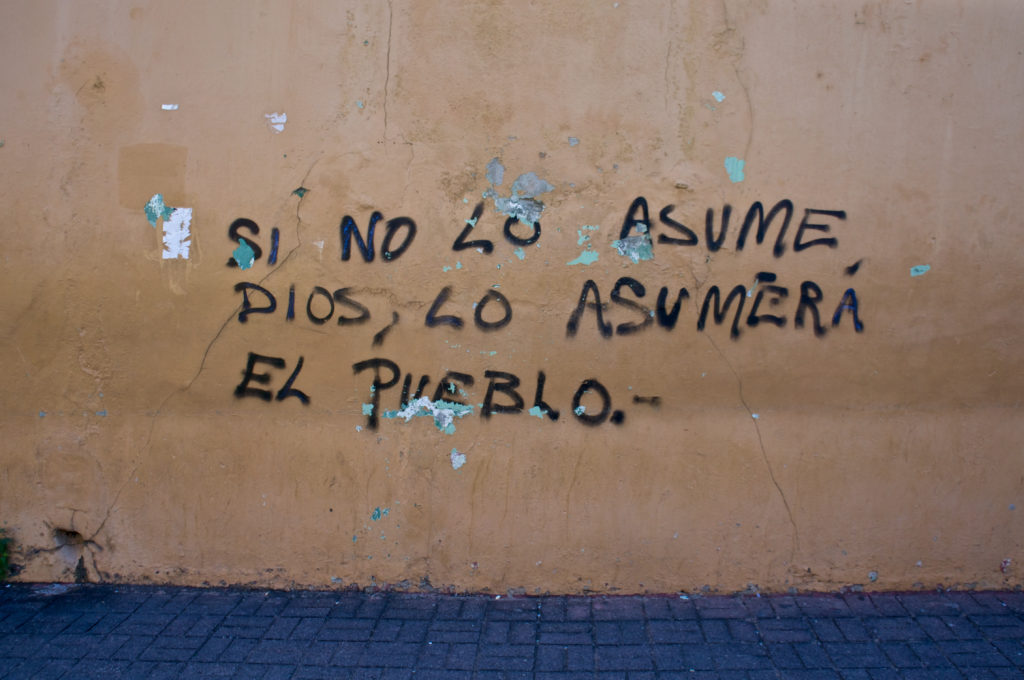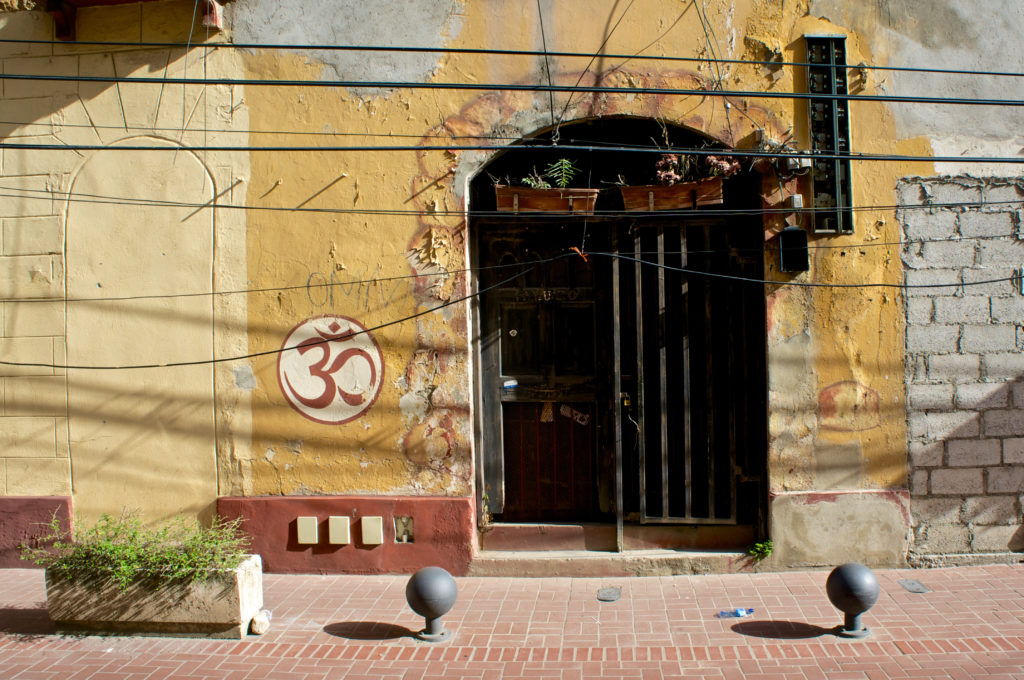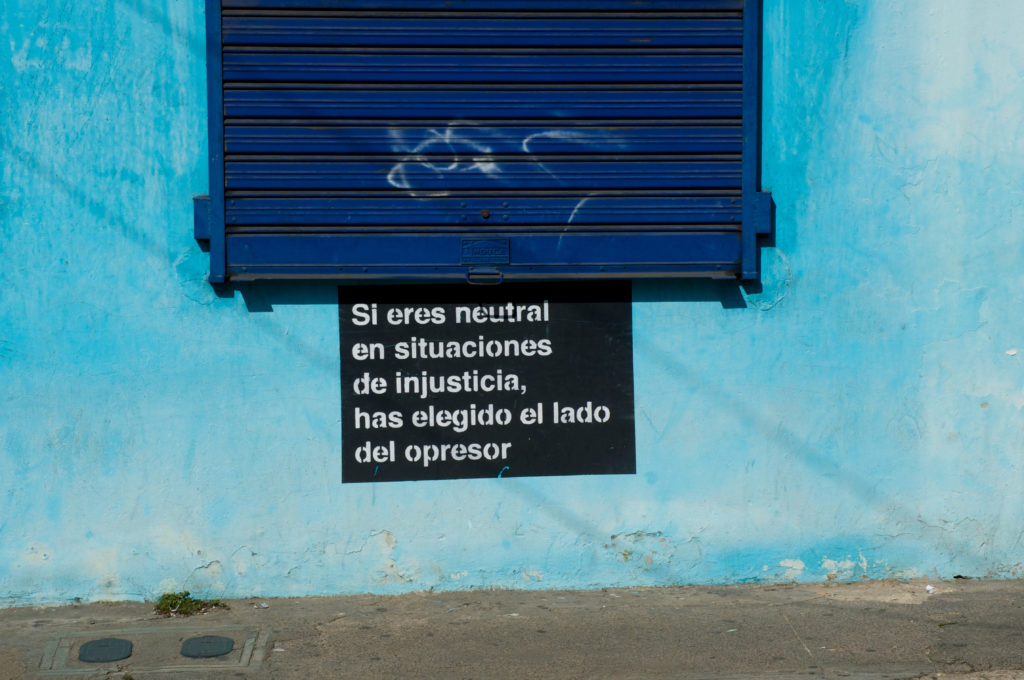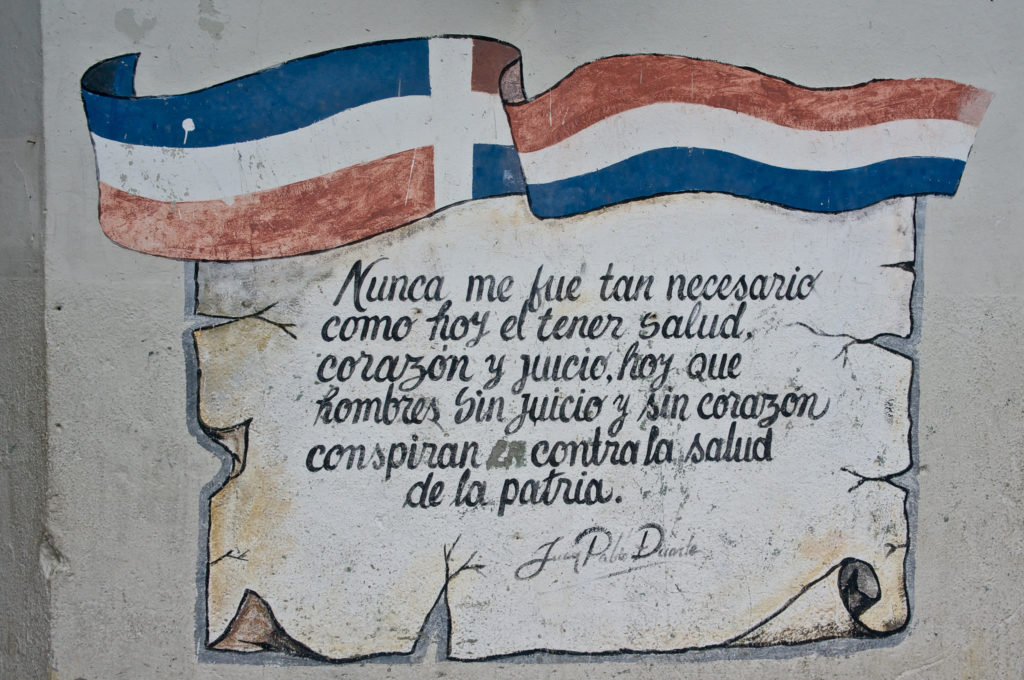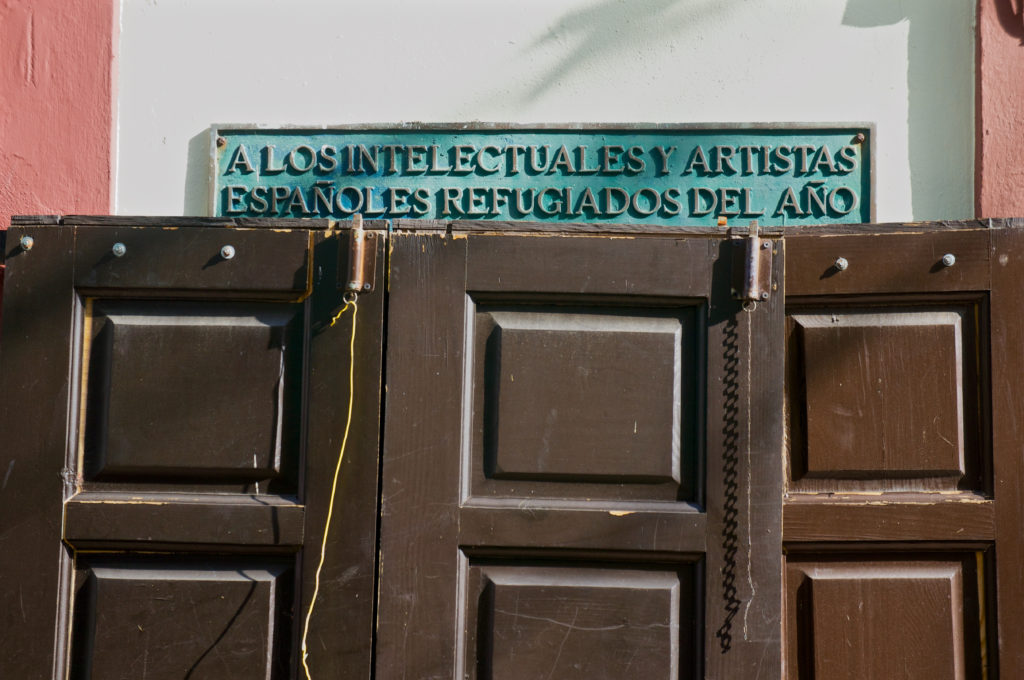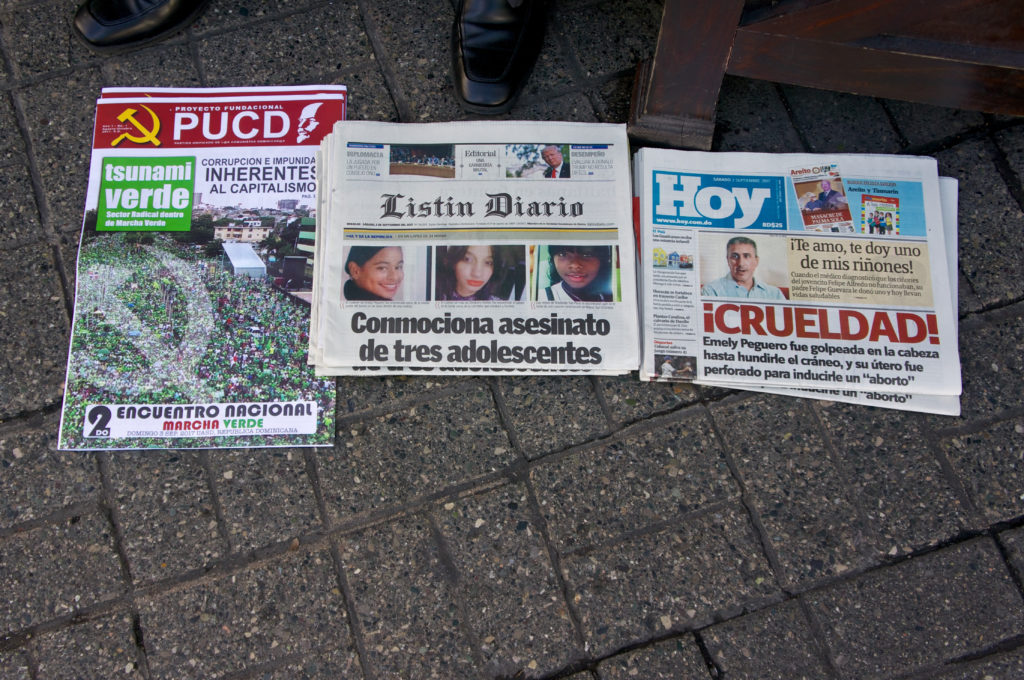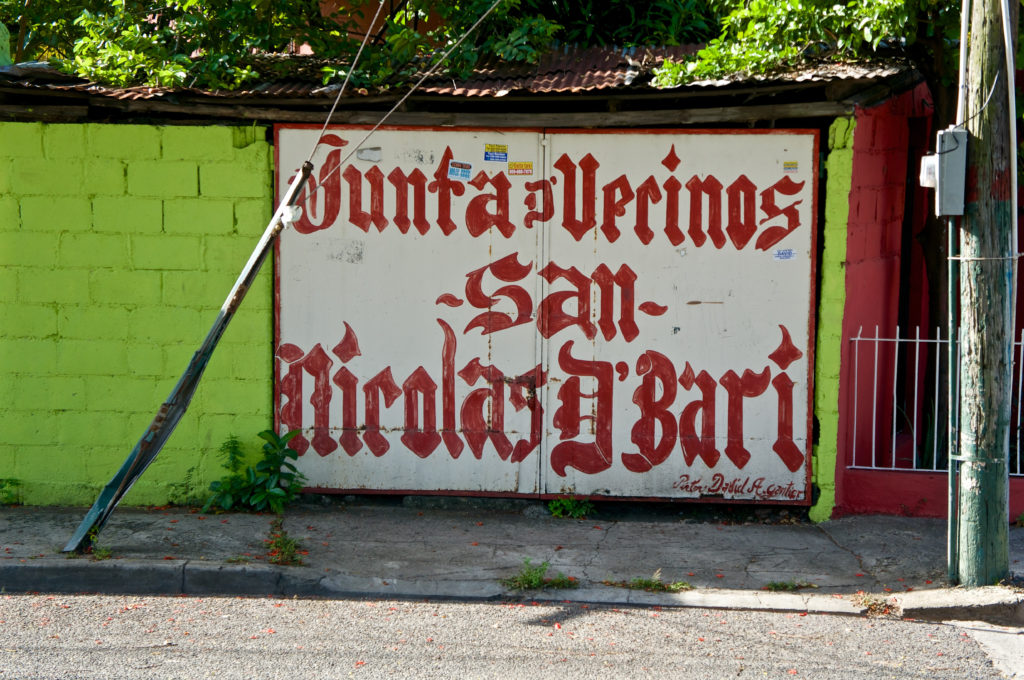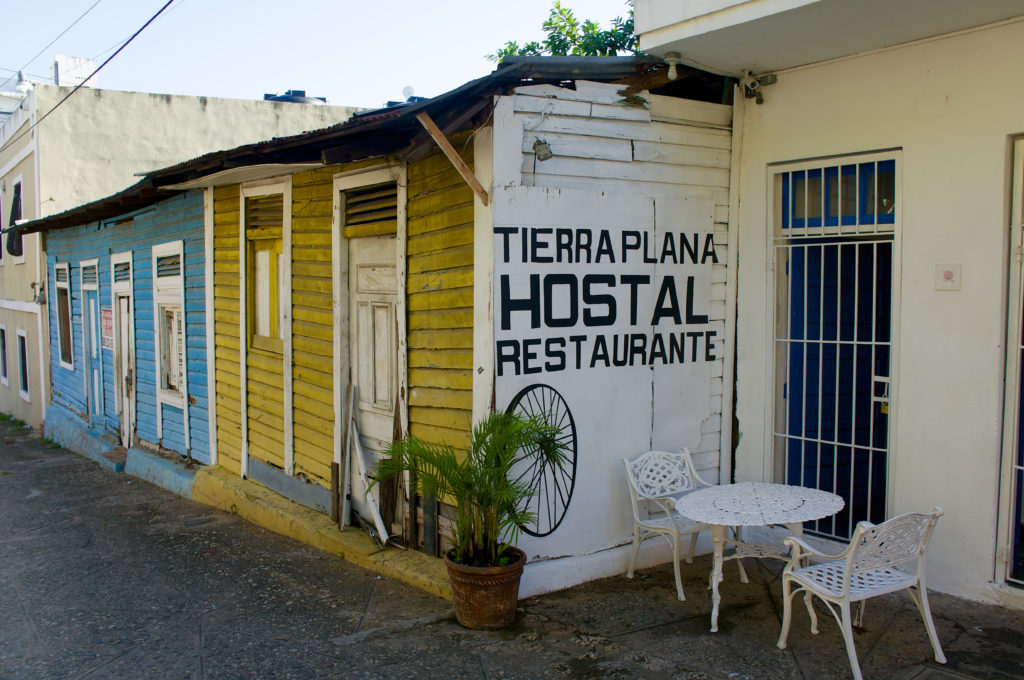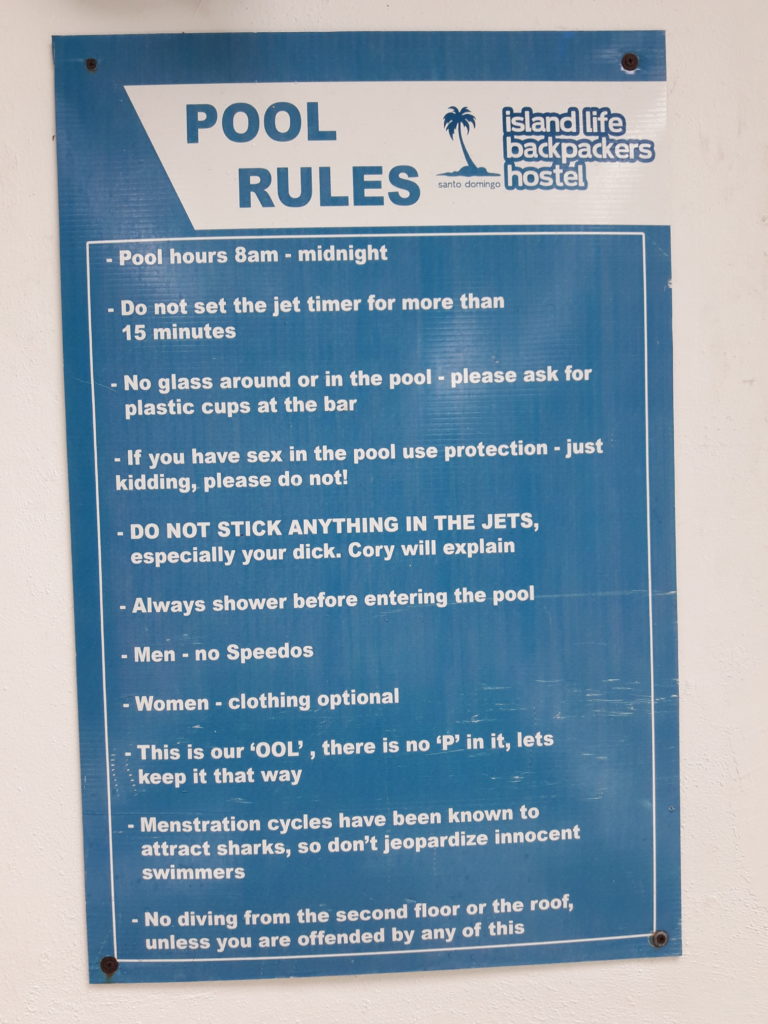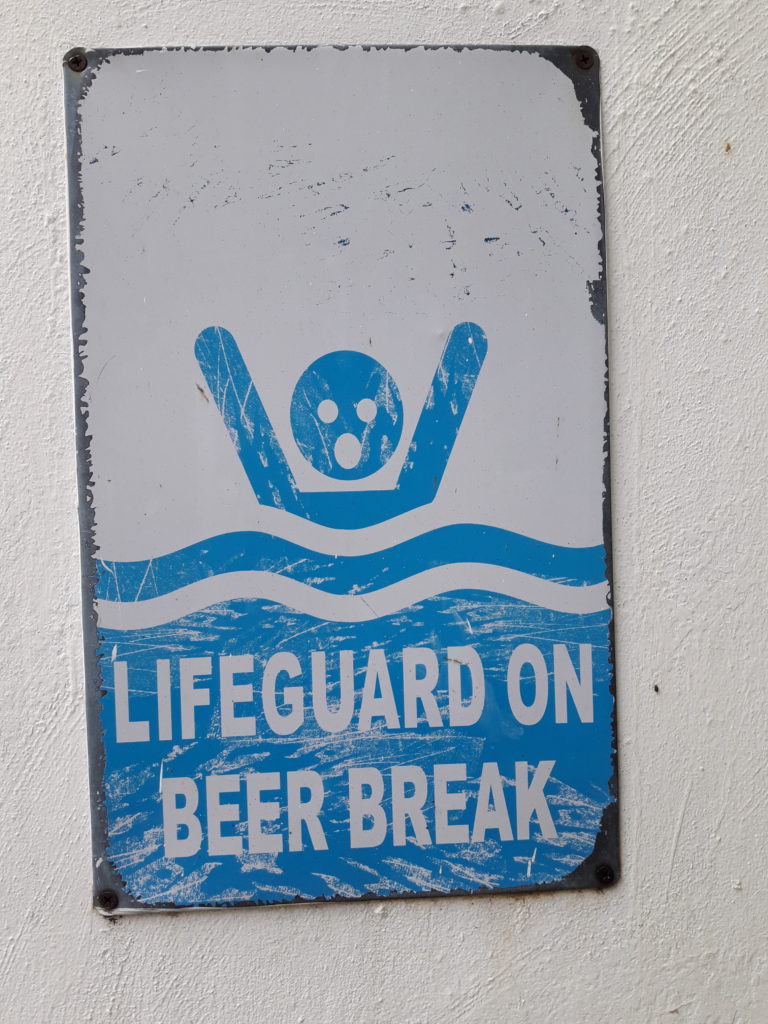Not all the artwork on Calle Cerra is of mammoth proportions. There are numerous smaller works too, ranging from signs and door decorations up to murals painted on single story houses and walls.
This little guy is standing right next to the gate that led me to Calle Cerra in the first place.
He shows up again here.
I liked this sign. Psycho Deli, qu’est-ce que c’est?
My mother taught me that unless your last name is Windsor, you have no business having big stone lions out in front of your house. But I think a small metal lion on a security gate would be OK with her.
The twisted street signs of Calle Cerra have become a much-photographed icon of Santurce. I’ve seen pictures of this in various publications. Which way is up and what the hell does it matter?
These portraits are by Boomone787, also known as Xavier Muñoz. He also painted some of the portraits on Calle Loíza, which I blogged about when I first moved to Puerto Rico.
I thought this was interesting: it seems to be a mural depicting a house that the owners would like to live in painted on the front wall of the house they actually live in.
I applaud the sentiment here: “Fight for an education that teaches us to think and not for an education that teaches us to obey.”
This one is just the right size: modestly proportioned so it doesn’t overwhelm the house it’s in front of.
Someone’s a big Spike Lee fan.
The painting below is by Shetrock, who has done a number of murals in the area. I think the piece below that is as well, though I don’t see his tag on it.
These next two are photos of Watusi, a small bar whose patrons sit in plastic chairs out on the sidewalk, chat with each other, and watch the world go by. The art here is once again by Boomone787.
While this isn’t artwork in the usual sense of it, the patio of this Mexican restaurant seemed so well designed and inviting that I had to photograph it.


